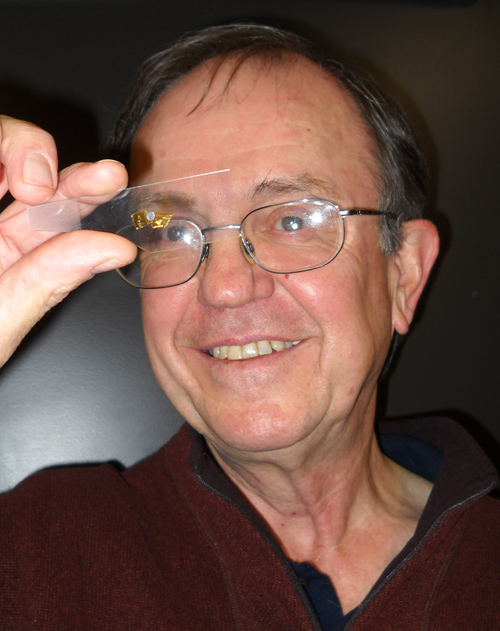
New federal funding this year will allow a Guelph chemist to continue pioneering experiments expected to help in developing tomorrow’s nuclear power reactors to feed an increasingly energy-hungry world.
Earlier this year, Prof. Peter Tremaine, Department of Chemistry, received a four-year grant worth $130,000 a year to study water under high temperature and pressure. His funding is part of a new grant program for research in next-generation nuclear energy systems at Canadian universities.
The program is funded by Natural Resources Canada, the Natural Sciences and Engineering Research Council, and Atomic Energy of Canada Ltd.
Nuclear reactors being built today are so-called Generation III models. Tremaine’s work looks beyond to Generation IV designs expected to be developed by about 2030.
“The Generation IV program is different,” he says.
Canada belongs to a group of 12 countries eyeing a shortlist of six design concepts for those next-generation reactors. In particular, Canada is supporting development of a so-called supercritical water reactor.
This new reactor concept would operate at much higher temperature and pressure than the current generation of CANDU reactors built during the 1970s and 1980s. The latter are nearing the end of their intended lifetime and are being refurbished for continued use, says Tremaine.
What’s a supercritical water reactor?
When the water in your kettle reaches 100 C, it begins to boil — and will continue to boil at that temperature until it’s all evaporated away. Place water in a vessel under higher pressure and you can increase that boiling point.
Crank up the pressure to about 250 times normal atmospheric pressure and you can drive up the water temperature to about 375 C. That’s the “critical point,” says Tremaine, where water is no longer clearly liquid or gas but a supercritical fluid.
For reactor engineers, extreme conditions make for more efficient reactors and electric power generation. During the past half-century, engineers and scientists have worked on Generation II reactor designs pushing water temperatures up to about 300 C.
Reactor makers are eyeing equipment in which water would reach a “critical point” threshold of about 370 C and even to about 650 C. “A lot of interesting things happen at the critical point and above.
“This is an opportunity to study the properties of ions and molecules in water in a little-explored frontier region from 300 to about 450 C.”
In Tremaine’s hydrothermal chemistry research lab, researchers use small-scale setups and inert materials in bench-top experiments with water under high temperature and pressure.
He says their work will help reactor engineers understand solution chemistry and refine models to predict how supercritical water reactors will work. That kind of information is important for governments and industry designing tomorrow’s power-generating devices.
Tremaine runs one of only about 20 labs worldwide working on aqueous solution chemistry above 200 C and equipped with highly accurate instruments needed for these studies.
This new federal support provides operating funds to work on measurement equipment he purchased with an earlier federal grant. Tremaine says it’s critical to train students and post-docs in this work, as the industry faces a looming shortage of reactor experts.
The 2011 Fukushima reactor accident slowed nuclear development. But Tremaine says reactors are still being built, particularly in China and India.
Referring to the challenge of meeting clean-energy needs of a projected world population of nine billion people by 2050, he says, “If you want to control greenhouse gases, nuclear reactors are going to be part of the solution.”
This project is part of a larger departmental research theme in green energy and green processing of materials.